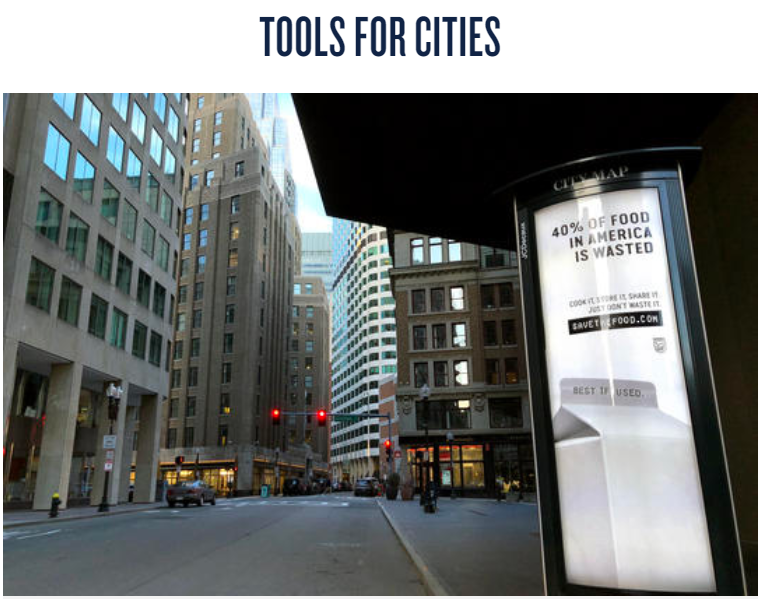In the US, the amount of food that is wasted post-harvest has increased by about 50% from 1974 and now comprises up to 40% of the total produced (Hall et al, 2009). As recognition grows regarding the magnitude of wasted food generated by households and businesses and its impacts, along with the great potential that exists to recover that food for those in need, interventions are proliferating. This report provides synthesized information about existing approaches in governmental plans to address wasted food and shares recommendations to guide future efforts. It is based on analysis of 93 governmental plans aimed at addressing the waste of food and interviews with 17 local, state, and national government staff about their plans. For this report, we define wasted food as food that could have been edible but was landfilled or incinerated.
Key Themes Across Plans. Ninety-three plans with content on wasted food (36 municipal level, mostly from the US; 18 US county level; 20 US state level; and 19 country-level plans including 12 from Europe and five from Asia, plus Australia and South Africa). We found that: (1) the number of new plans each year has dramatically increased since 2000; (2) objectives for addressing wasted food are included in multiple
types of governmental plans, most commonly in solid waste management plans and least commonly in climate plans; and (3) 22 of the plans set numeric targets for minimizing the amount of food that is wasted by a specific year. The US Environmental Protection Agency (EPA) food recovery hierarchy emphasizes that the top goal should be prevention, i.e., reducing the quantity of excess food produced, purchased or served. We found that while some governmental plans stated a commitment to prevention, the plan activities commonly did not directly connect to it.
Tackling Barriers. Interviewees described approaches to addressing barriers to progress. These barriers included political challenges, disincentives to moving up the EPA food recovery hierarchy, lack of funding, low prioritization, setting non-evidence-based goals, contamination of the compost stream, negative perception of composting due to a history of failure, data collection issues, waste management crossing jurisdictional borders, and lack of scale.
Words of Wisdom. Strategies recommended by interviewees include clearly linking wasted food targets with other existing goals; economically incentivizing wasted food strategies through tax credits and other policies; setting evidence-based targets; planning educational campaigns in conjunction with other strategies; gaining public support with pilot projects; forming strategic partnerships with local organizations, including businesses, that share common goals; keeping in mind the local context; making a plan for evaluation; clearly specifying roles, action steps, deadlines, and measures of enforceability in the plan; enabling community input; checking out source reduction strategies first if you have no organics collection program yet; sharing stories of success and failure to help other jurisdictions; and building on past efforts. A list of helpful resources is included. This report provides jurisdictions with a summary of how other jurisdictions are using planning to address wasted food, and shares links to existing plans and collected wisdom from those engaged in these processes. While this report can guide discussions on creating and improving plans to address the waste of food, there is no silver bullet. Each jurisdiction has distinct resources, challenges, and opportunities. New opportunities could be created if jurisdictions had more diverse portfolios of transformational and incremental strategies that enable action across the entire food waste recovery hierarchy and not only at the end-of-life stage.



